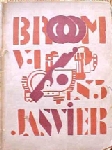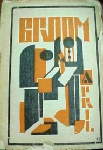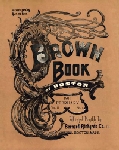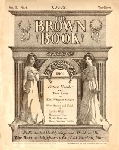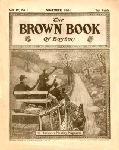The Brown Book of Boston [v7 #3, July 1903] (Richards Publishing Co. Ltd.; Boston, 10¢, 28pp, tabloid)
A women’s magazine, clearly, and a good example of a 19th-century story paper on its way to become a 20th-century big slick. Although a monthly, it’s in “weekly” format: large of size, saddle-stitched, pretty much exactly the same dimensions as later issues of The Saturday Evening Post and Collier’s. A two-colour cover, predominantly green, with a Gibson Girl-type young lady on the front. Quite thin—28 pages, including cover (but, then, I haven’t seen any examples of the S.E.P. and Collier’s from as early as 1903, and it’s possible they weren’t much thicker at that time). Published from Boston by the Richards Publishing Co. Ltd. Quite a number of articles, and lots of black- and-white illustrations. Print small, but otherwise nicely produced. The most familiar name in the contents list is Ellis Parker Butler, who has a short humorous article called “The Windiest Corner in the World” (about the gusts of wind caused by the Flatiron Building—New York’s first skyscraper?). I suspect this is a magazine which ceased publication within a few years of 1903, unable to compete with the S.E.P. and Collier’s, but I may be wrong. Only fiction listed. Details supplied by David Pringle.
|
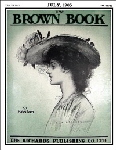
|
